General
Transport
People
Accomodation
Food & Drink
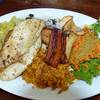 What is the local food like in Costa Rica?
What is the local food like in Costa Rica?
 What are some places to eat?
What are some places to eat?
 What can I eat in Costa Rica as a vegetarian?
What can I eat in Costa Rica as a vegetarian?
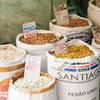 How much does the food cost?
How much does the food cost?
 Can I drink tap water in costa Rica?
Can I drink tap water in costa Rica?
 What soft drinks are available?
What soft drinks are available?
 Is there tea and coffee culture in Costa Rica?
Is there tea and coffee culture in Costa Rica?
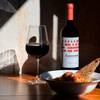 Where to buy alcohol in Costa Rica and how much does it cost?
Where to buy alcohol in Costa Rica and how much does it cost?
 What alcoholic drinks to try while in Costa Rica?
What alcoholic drinks to try while in Costa Rica?
 What are the restrictions regarding alcohol consumption?
What are the restrictions regarding alcohol consumption?
Sightseeing
Legal
Money
Safety & Health
Family travel
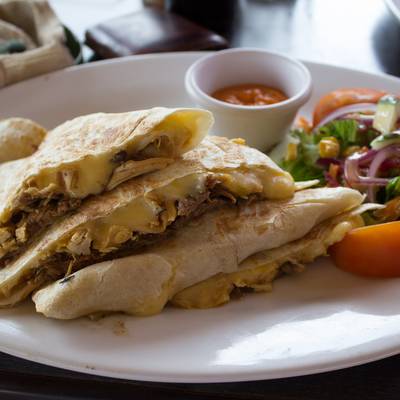
What local dishes to try in Costa Rica?
Casado. In Costa Rica, rice and beans go hand in hand, nowhere more so than in its most popular menu option, a casado, which, fittingly, translates to “married” in English. Casados are complete lunches composed of black beans, rice, and a choice of protein. You can find these dishes at humble Costa Rican sodas (family-run stands, sort of like a diner) or gussied up at some of the fancier hotels, but the folks at Santa Juana Lodge do a fantastic casado with tilapia that they raise on the property’s sustainable fish farm. On the Caribbean side of the country, you’ll find a similar, Jamaican-inspired dish called “rice and beans,” whose name is said in English rather than Spanish, prepared using coconut milk and oil.
Gallo pinto. Another dish made of rice and beans. Local lore points to its origin in the tiny town of San Sebastían, where long ago a local resident, Don Bernabe, boasted widely of his prized gallo pinto (spotted hen), which he was saving for the town’s Christmas celebrations. Small-town gossip spread and grew to daunting proportions when Don Bernabe unexpectedly received a crowd of townsfolk eager to try his spotted hen. Being the quick thinker that he was, Don Bernabe decided to pay homage to the appearance of his gallo pinto by frying up copious amounts of white rice and black beans so that everyone had something to eat.
Arreglados. Sandwiches served on rolls made with masa, arreglados are stuffed with all sorts of goodies, depending on the chef, but they always contain cheese.
Pejibayes. One staple of daily culture in Costa Rica is pejibayes (peach palm fruit), a slightly savory, almost artichoke-tasting fruit from a palm tree that’s traditionally boiled with a bit of salt, topped with a smattering of mayonnaise, and snacked on alongside a cup of coffee. New restaurants are also putting a modern spin on the orange-colored pejibayes, whipping them into purées with cream or blending the cooked fruit into a silken soup.
Gallitos de Picadillo. Gallitos are corn tortillas served with various toppings, such as a small brunoise of local vegetables like chayote squash, arracache (a root vegetable), or green beans, or picadillo, ground beef sautéed with onions and peppers. Locals eat gallitos de picadillo topped with a fried farm egg and spicy red salsa.
Vuelve a la Vida. The name of the dish vuelve a la vida, a Costa Rican seafood cocktail, translates “returning to life,” which is what locals believe the ceviche helps them do after a night of drinking too much guaro, a sugar cane liquor that is Costa Rica’s national spirit. Vuelve a la vida can be presented as a trio of octopus, shrimp, and snapper combined with red bell pepper, citrus juices, and chiles, and served alongside crisp, lightly salted yucca and plantain chips.
Chorreadas. These are Costa Rican corn pancakes that are eaten as a snack or for breakfast. They are delicious paired with coffee as they are normally made sweet or you can eat it with natilla, a type of sour cream. Chorreadas is a pancake but made with ground corn which you pan fry until it turns a crunchy golden brown. These might not be on menus, so ask the waiter!
Rondon. Composed of whatever the cook can “run down,” rondon dates back to earlier times of subsistence diets in the Caribbean. Though the only thing consistent is that it changes, there are a few fundamentals to this spicy coconut soup. Typically, you’ll find a fish head and assorted catches of the day, along with a variety of tubers like sweet potatoes and yucca, simmered in coconut milk for hours over an open wood flame that imparts a smoky depth. Toss in a couple Panamanian chilies for that signature lip singe, and there you have it – rondon.
Chifrijo. A typical midday snack or late-night bar treat that you’ll find throughout Costa Rica is chifrijo. The word is a combination of two other words, chicharrones and frijoles, which serve as the two primary ingredients for this dish. Chicharrones, or fried pork rinds, are layered together with beans and a starch, usually tortilla chips or bread, and topped with things like avocado, pico de gallo, chimichurri and lime.
Patacones. Patacones are made from green plantains. The green plantain is peeled and sliced into quarter- to half-inch thick pieces and quickly boiled on each side. Then, each piece is flattened and fried on both sides until crisp. They are then topped with lime and salt. Sometimes they are served with refried beans on top and avocado, pica de gallo, or shredded cabbage salad.
Olla de carne. Olla de carne is comfort cooking at its best. This is a slow-cooked stew that is packed with nutrient-rich and flavor-rich ingredients. Similar to a pot roast, the stew contains chucks of beef, potatoes, sweet potatoes, carrots, sweet plantains, green plantains, chayote, and yuca. This stew is the definition of hearty.
Sopa negra. Not all places in Costa Rica are hot. In elevated zones or in the Central Valley temperatures can be quite moderate and sometimes even chilly. It is in these places that a bowl of sopa negra will taste its best. Sopa negra is traditional black bean soup. This is also Costa Rica’s answer chicken noodle soup and served when people are sick. Sopa negra is typically served with two hard boiled eggs, a cup of rice, and a side of corn tortillas. A warming dish that is good for the soul.

Is it easy to get medical help in Costa Rica?

What can I bring home from Costa Rica?
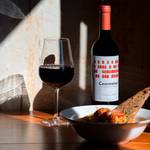
Where to buy alcohol in Costa Rica and how much does it cost?

Can I drink tap water in costa Rica?

Where to stay when traveling with kids?
